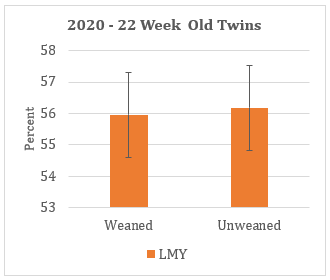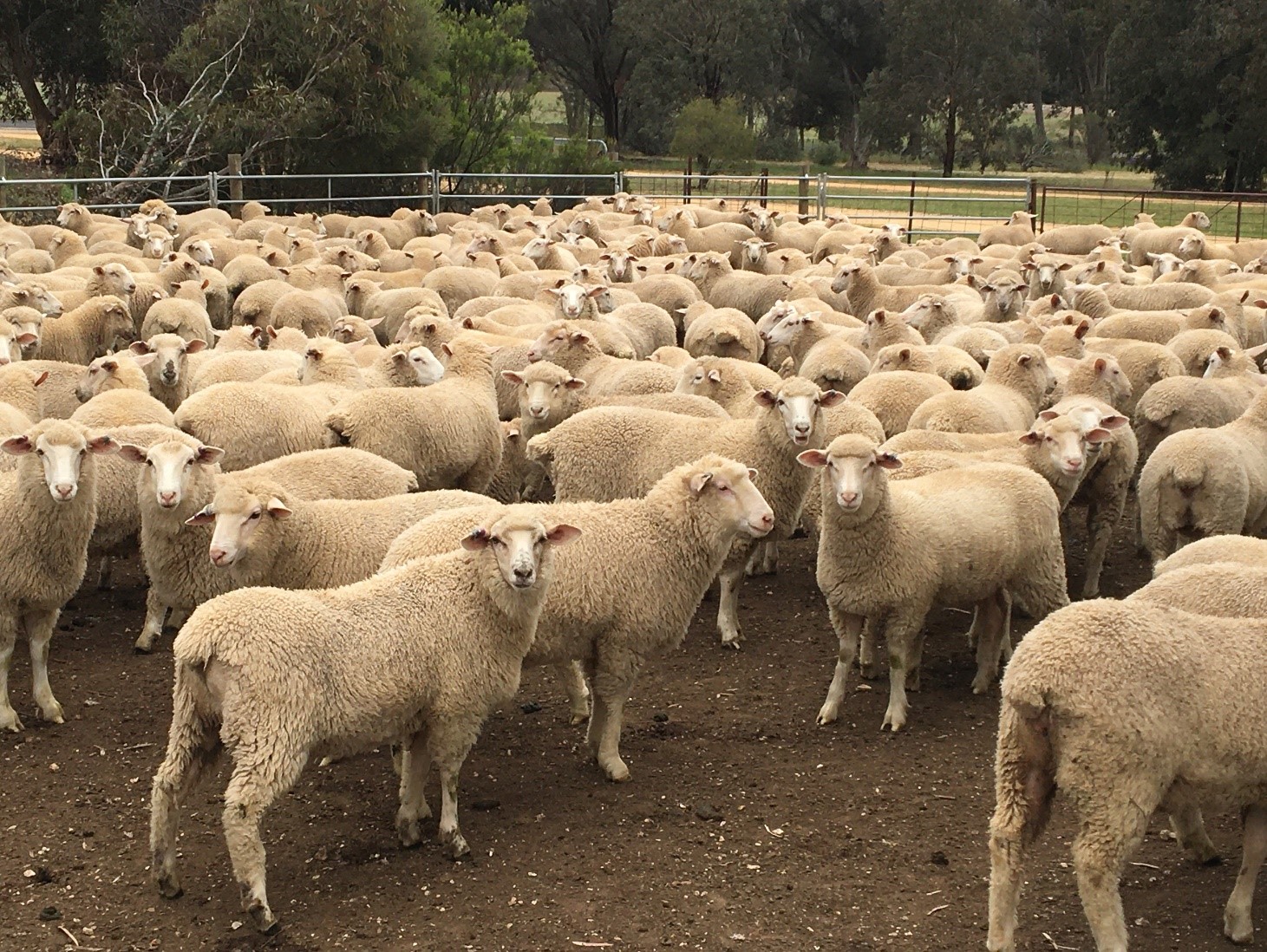To wean or not to wean
Download a printable version of this page: To wean or not to wean ![]() [PDF File - 263.2 KB]
[PDF File - 263.2 KB]
The St Arnaud BestWool/BestLamb (BWBL) group were interested to investigate whether weaning their autumn drop prime lambs at 12 weeks of age would lead to production benefits or cause any adverse effects to lamb weight gain. In 2019, the group embarked on a two-year farm demonstration, co-funded by Agriculture Victoria and Meat & Livestock Australia (MLA) to weigh up the benefits of weaning.
Many producers in the Wimmera region sell terminal lambs directly from the ewe, however weaning is a common practice for replacement (maternal) ewe lambs. Some of the group members were concerned that lamb growth rates could be compromised through the weaning process. Although producers were sceptical about weaning terminal lambs, all had considered alternative systems and/or more efficient finishing systems.
For an accessible version of the content in this PDF see the page below.
To wean or not to wean – ![]() [PDF File - 263.2 KB]
[PDF File - 263.2 KB]

The demonstration
The demonstration compared weights of weaned and unweaned lambs across three farms in 2019 and 2020.
At weaning, ewes and lambs were split into three mobs including:
- Weaned lambs
- Unweaned ewes and lambs + weaned lambs
- Unweaned ewes and lambs + weaned ewes
Each mob was allocated paddocks with similar Feed on Offer (FOO), pasture type and stocking rates. Feed tests were taken to ensure similar conditions across the treatments.
Ewe condition and lamb weights were measured at the time of weaning and at 16 weeks of age. Measurements were also taken prior to sale.
Results
2019 Results
There was no significant difference between the average weights of weaned and unweaned lambs in Year 1 (Fig 2). Two of the three farms analysed (F2 and F3) found that weaned lambs were slightly heavier than unweaned lambs (up to 3kg) at 10 weeks post weaning. However, unweaned lambs were slightly heavier than weaned lambs on one farm (F1).

2020 Results
Three farms undertook measurements in 2020, however data from two sites was incomplete.
Twin weaned and unweaned lambs on Farm 4 showed small (not significant) differences in weight at each weighing (Fig 3). For the first few weeks, weaned single lambs on this farm grew slightly slower than unweaned lambs and weaned lambs running with unweaned ewes. However, by 21 weeks of age they had nearly caught up to the other single lambs. Abattoir data was also collected for Farm 4 twin lambs. This showed no significant differences in the hot carcass weights and the lean meat yield between weaned and unweaned lambs (Figs. 4 and 5).



Ease of management
The group found management of weaned ewes and lambs to be simpler and beneficial to their farming systems. The fact that the weaned ewes had lower nutritional requirements meant they could be moved onto lower value pastures, leaving more of the high-quality feed available for lambs.
This led to one producer increasing their stocking rate. Another producer simply enjoyed the fact that they didn’t need to draft the ewes off before they weigh lambs, which made the job much quicker.
The group found trial results to be reassuring and useful, but they are now weaning largely due to easier management within their production systems.
“The data gave us confidence that lambs won’t be compromised by weaning, however it’s the ease of management that is making us change our practices”, group member Mel Fenandez said. “We could be looking at data but it’s having tried it that has made the difference. Our agent always told us to sell as unweaned suckers – for the look and he also thought weaning would set them back. However, the agent couldn’t pick the difference between our weaned and unweaned lambs. Now he’s telling other people to wean!”

Things to consider
Weaning weight and post weaning growth are two key factors that influence weaner survival (Hatcher et al 2008). To achieve optimal growth and survival outcomes, producers should consider following the current industry guidelines on best practice weaning:
- Prepare weaning paddocks to achieve 1200-1500kg DM/ha of high-quality perennial pasture containing at least 20% legume
- Maintain the pasture species in a vegetative state with minimal grass seed with lower fibre content that could reduce intake
- Weaning paddocks to be low worm risk (e.g., not lambing paddocks)
- Aim to have weaners at 40% of their mature weight at weaning and 45% of mature weight by the start of summer
- Wean lambs at 12-14 weeks from the start of lambing. Lambs can be weaned at 10 weeks of age provided the joining period was no longer than 5 weeks, so that the youngest lamb weaned is not less than 5 weeks of age
- Weigh and drafting weaners into differential management groups if there is a large variation in weight at weaning or the joining period exceeded 35 days.
- Monitor weight gains post weaning to ensure the lightest 25% of weaners are identified, drafted, and managed accordingly.
Further reading
Campbell, A.J.D., Broekhuizen, A., Curtis, K., Croker, K.P., Behrendt, R., Thompson, A.N., 2014. A survey of post-weaning mortality of sheep in Australia and its association with farm and management factors. Anim. Prod. Sci. 54, 783.
Hatcher, S., Eppleston, J., Graham, R.P., McDonald, J., Schlunke, S., Watt, B., Thornberry, K.J., 2008. Higher weaning weight improves postweaning growth and survival in young Merino sheep. Anim. Prod. Sci. 48, 966–973.
Further information
Dr Steve Cotton, Dynamic Ag
s.cotton@dynamicag.com.au
Rachel CoombesAgriculture Victoria- Ararat
Rachel.coombes@agriculture.vic.gov.au